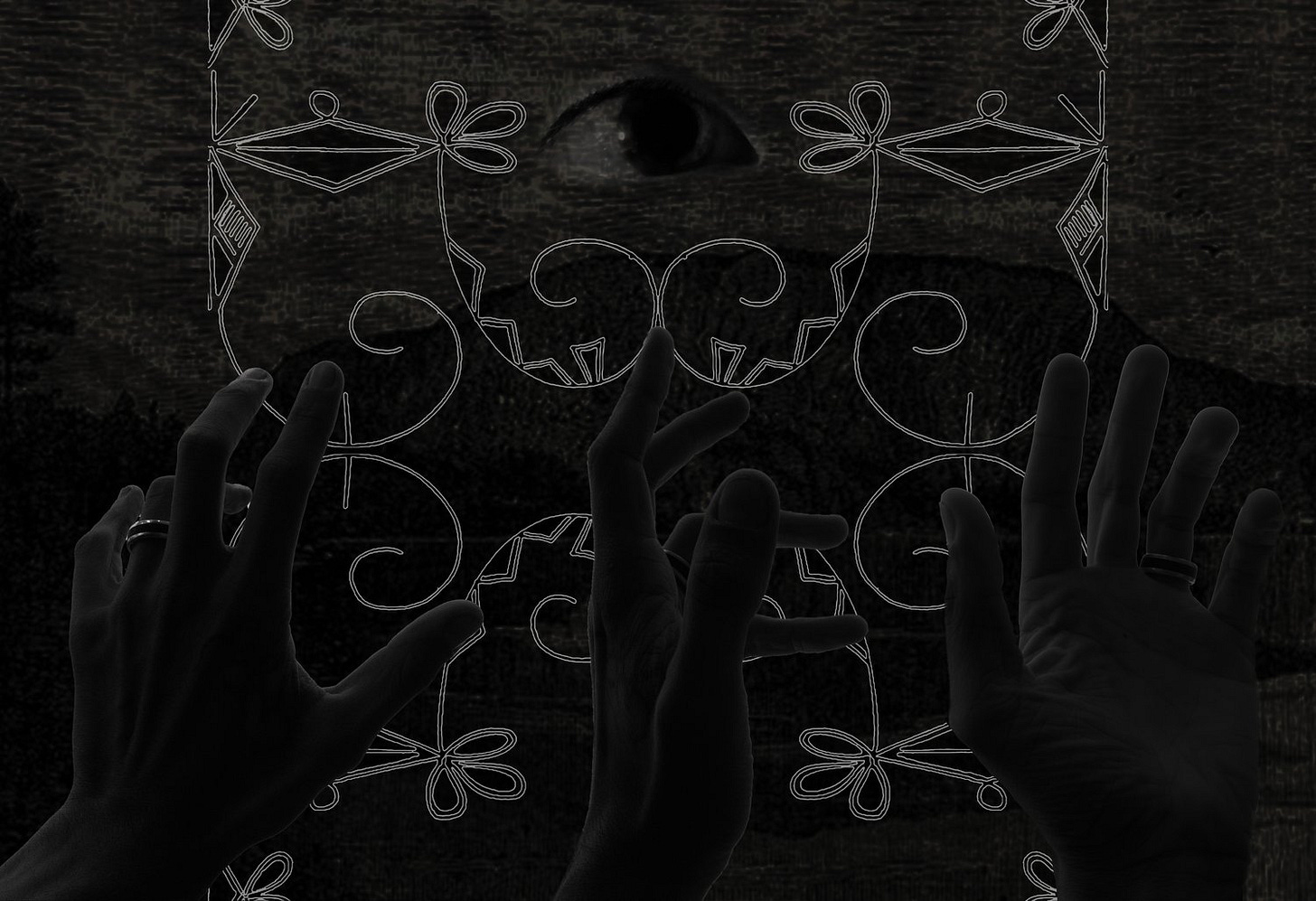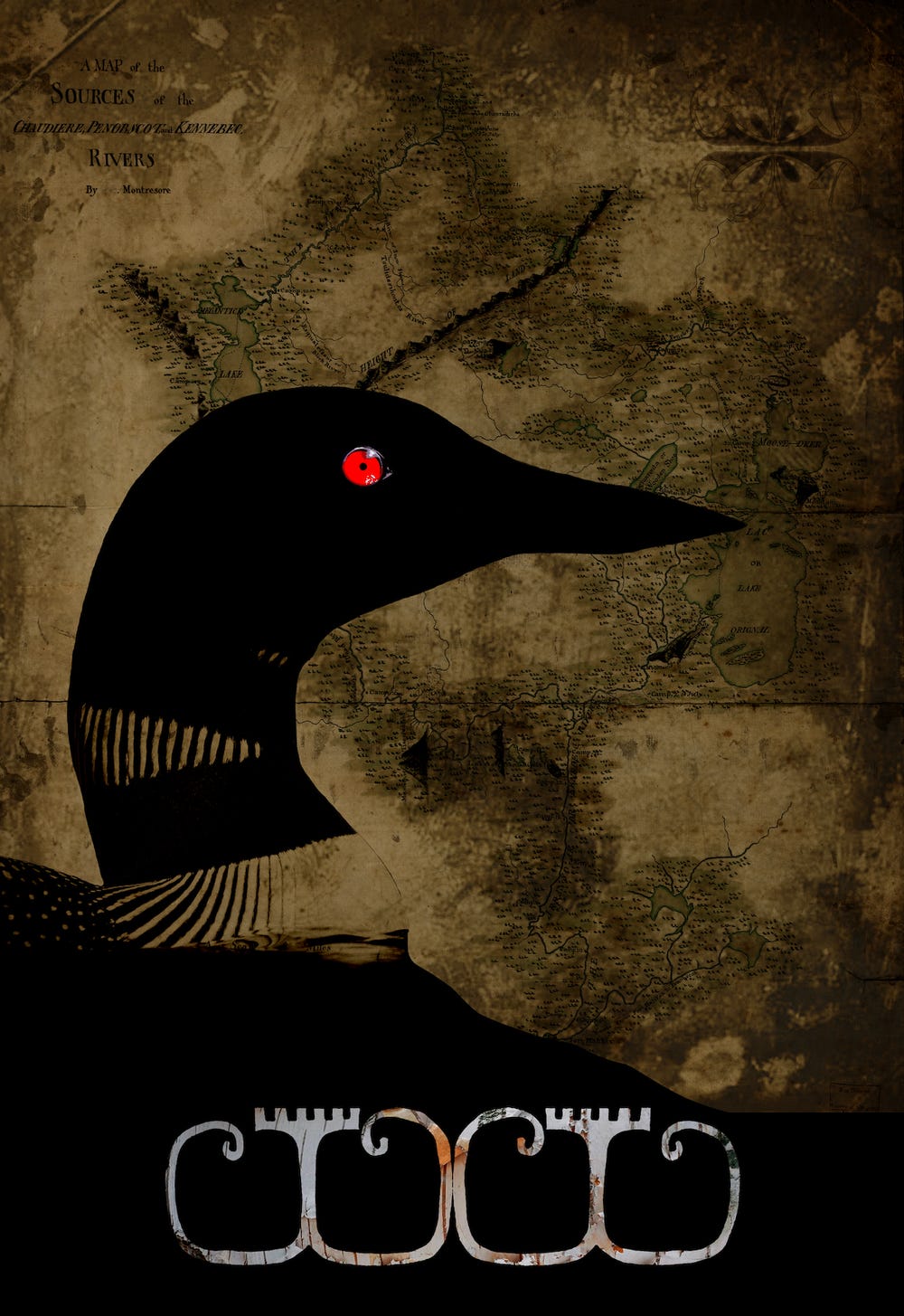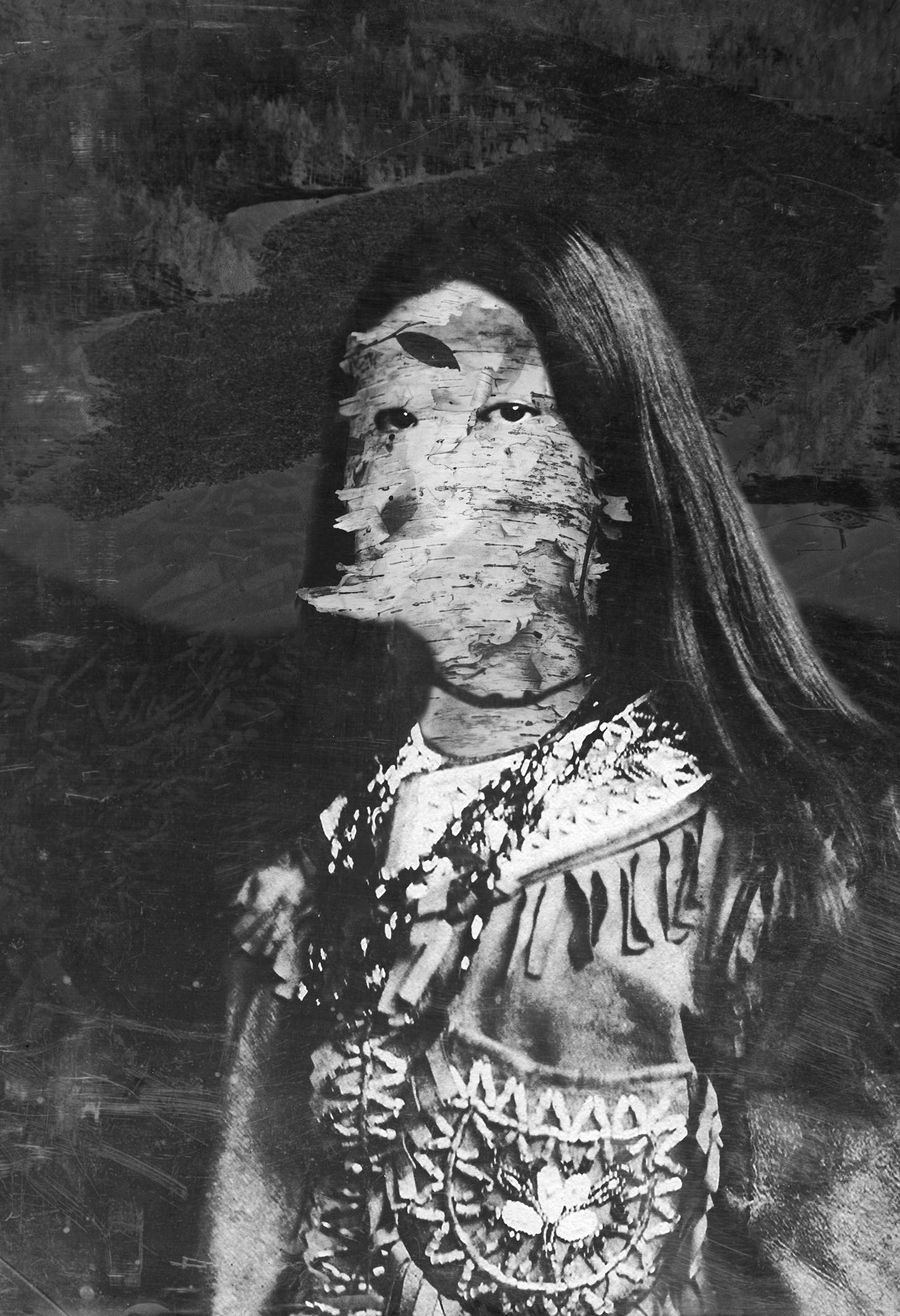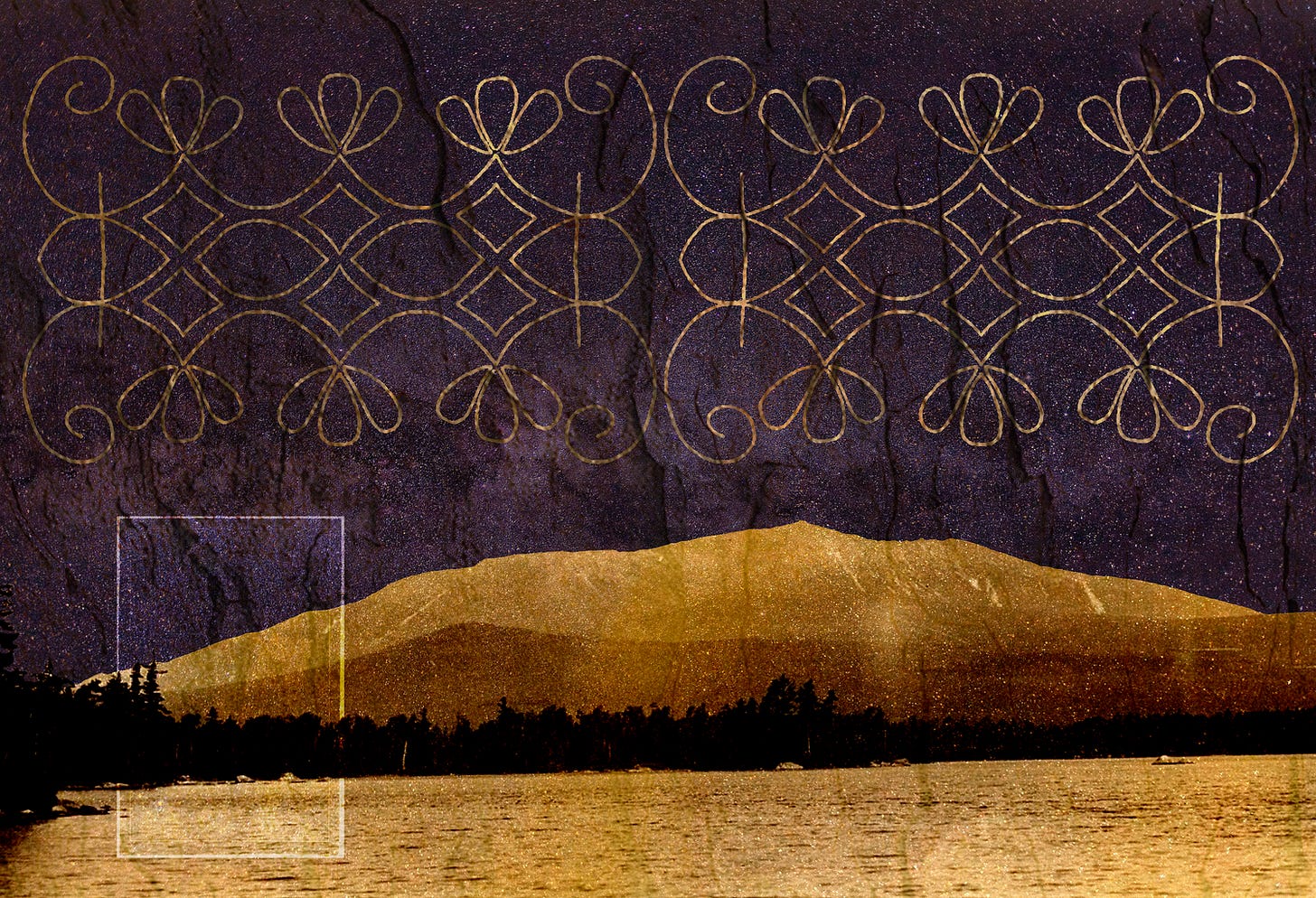Re-envisioning Histories: How One Indigenous Artist Uses Archival Documents to Create Hope
An Interview with interdisciplinary artist Lokotah Sanborn by SFC staff writer Georgia Howe
Lokotah Sanborn (he/him) is a Penobscot interdisciplinary artist and community organizer. The Penobscot Nation is one of the five Tribal Nations indigenous to Maine that, collectively, are known as the Wabanaki (which translates to “people of the Dawnland”). Sanborn was born on the Penobscot Nation reservation and spent most of his life there. After many years of grassroots organizing for environmental and Indigenous rights, he broadened the scope of his work to further prioritize artistic pursuits. Sanborn’s work—which ranges from 2D collage to painting to filmmaking—is guided by his unwavering commitment to honoring his community’s past while imagining its future. Same Faces Collective sat down with Sanborn to learn more about the overlap in his identity as an artist and activist.
GH: Tell us about your background in community organizing. What has that work looked like, and how has it led you to where you are today?
LS: My start was with the gay marriage campaign in Maine. From there, I got into canvassing, fighting for public education in the state and the Maine Clean Election Act. I then shifted focus to my community and environmental factors that affected them, like landfills, mills, and mines that threatened the watershed around the Penobscot Reservation.
Over the course of the last four years, I’ve also been doing a lot of work advocating for Wabanaki sovereignty. We’re in a very unique situation here in Maine where we aren’t afforded the same rights as other Indigenous Nations across the country. Today, my work stays centered on Wabanaki Sovereignty and environmental leadership. There’s a lot of overlap between that vein of advocacy and my artwork. I explore themes of resistance and resilience through this level of abstraction and surrealism. The world at large is a surreal place riddled with contradictions. I use that as a medium to lay that bare.
GH: What does your creative process look like?
LS: With the 2D collage pieces, the process begins with research. There’s a lot of historical research that goes into my work. I’m especially interested in photographs, letters, and maps. A lot of the process is about engaging with history within the Wabanaki territory.
In addition to using archival documents [as research and the physical material for my collages, I bring in motifs that are found in our culture’s traditions. Things like double curves, and physical materials like birch and ash bark. A lot of my inspiration comes from gathering those materials. There’s also a certain level of stream of consciousness, too. I'll have a general idea of what I’m trying to portray, but most just comes out in the moment. It feels more organic in that way; it's not forced, but rather develops as I’m creating it.
GH: You’ve talked about the dense research that informs your art. How do you balance that out with more abstract elements?
LS: Contradictions and abstractions from material reality exist all around us today. The abstract elements I utilize in my work are ways of exposing those abstractions and contradictions. It's a way of holding a mirror to the distorted versions of reality that Colonialism relies upon.
There’s a certain level of hope that exists in my work. Which is important because of all of the negative things happening in the world that we’re inundated with constantly. I think of the ongoing genocide in Palestine, the continual violence in Sudan and the Congo, and the evolving restricting of Native sovereignty in the U.S. I think what I’ve learned through the years, in part because of my community organizing work, is to find a layer of hope. Not a hope that’s based in a blind optimism, but a hope that’s based in reflection and honoring peoples' struggles through time. We still exist today despite impossible odds, and so we will continue to exist and persist into the future. Though there is certainly some darkness that exists in some of my pieces, there’s also that uplifting of levity and hope.
GH: Same Faces Collective’s issue theme is Re: vision. What does the word revision mean to you?
LS: It’s interesting––I think that there’s a lot in that word. There’s often, at least from my perspective, a kind of revision that harms this world. History that tries to erase Indigenous peoples and frame settler colonialism as something that has always been in existence projects a certain feeling of permanence and inevitability. Looking through the documents I compile, there are so often times where it's clear that history as we know it has been shaped by specific people with specific agendas. I mean, I think that we’re always in the process of revision. What matters is whether or not that revision is being done for the betterment and the improvement of people [or if it’s] seeking to erase and eradicate entire swathes of the population.
The point of my art specifically is to take these important historical documents and photos and footage and turn it all on its head. I am working with records from the era of salvage ethnography, when they said that Native people were going to go extinct, and saying “Hey! Still here!” I’m also thinking of the word re-envision. Revising the past to re-envision futures.
GH: Do you have a favorite piece that you’ve made?
LS: I did a piece titled Mary that’s still one of my favorites. It features my four-times-removed grandmother. It has a lot to it. I used a photo of her that was held at the Maine Historical Society, along with one of the Old Town Mill and a logging photo from an archive I discovered. Then they’re all spliced together. I think that that one has a lot of depth to it in the sense that there’s just as much hope as there is sadness and darkness in it. If you’re looking through it, longer than just the surface level, it really reveals itself in that way.
GH: What’s next for you?
LS: I have a few different projects lined up, mostly focused on my film work. I have a fellowship coming up through the Camden International Film Festival that’s because of a short proof of concept I submitted. I’ve also got a residency lined up with Indigo Arts Alliance in Portland, Maine, at the start of the new year. Outside of that, just continuing to create. There’s a bit of going with the flow, but still in an intentional manner. I’m staying busy.
GH: Is there anything else you want to share?
LS: I’d say one of the reasons why I am an interdisciplinary artist is because I sometimes feel like certain mediums don’t work to tell the story that you’re trying to share. Or, if you’re telling a story in a variety of different mediums, it can come together to form a whole. There are certain times where I feel that this needs a collage, versus this needs a photograph, or a video. Being able to marry all of those together is something that’s really important to me. I also just get bored sometimes! Having more than one medium allows me to shift and not get tired. If I’m working on a collage and it's not clicking, I can pick up my guitar or go somewhere with my camera. It keeps me going.
Same Face Collective thanks Lokotah Sanborn for sharing his incredible art and insights. To see more of Lokotah’s work, visit his website.
Georgia Howe (she/her) is a Maine-based creative with a BFA in Creative Writing from Emerson College. She loves exploring folklore and stories from the woods through a queer and gendered perspective. Along with a number of published articles and short stories, her past work includes creative production for INDEX Magazine as well as editorial work for a number of literary and arts magazines. You can also find Georgia painting, reading fairy tales, baking danishes, or on Instagram at @/georgia_howe







